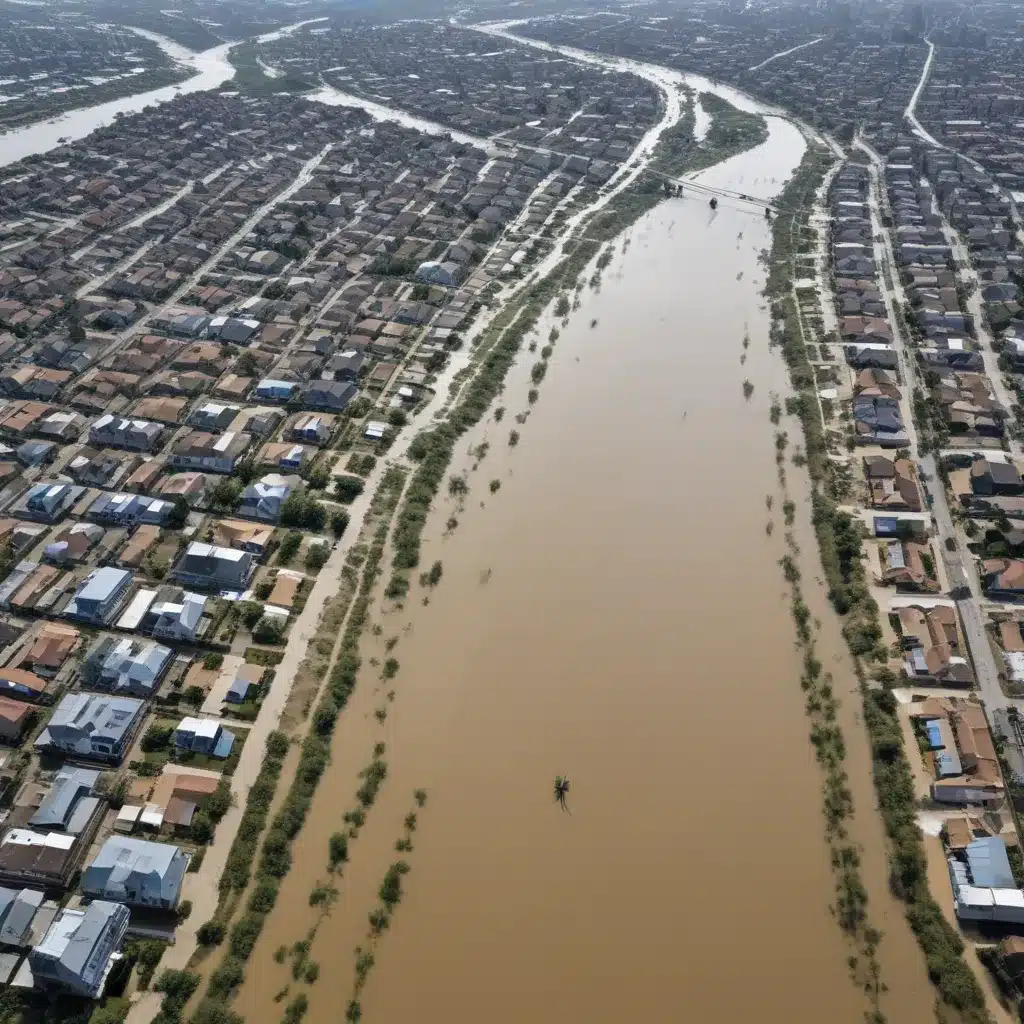
In recent decades, the devastating impacts of floods have underscored the urgent need for cities to proactively incorporate flood resilience into their urban planning and design processes. As the effects of climate change continue to intensify, innovative approaches to flood control and water management have become essential for safeguarding the lives and livelihoods of urban populations, especially the most vulnerable.
Flood Risk Assessment
At the heart of any successful flood resilience strategy lies a robust and comprehensive flood risk assessment. This involves rigorous flood hazard mapping to identify areas prone to inundation, while also analyzing the vulnerability and exposure of critical infrastructure, economic assets, and marginalized communities. Cutting-edge climate change modeling is vital for anticipating future flood scenarios and ensuring that interventions can withstand long-term risks.
The city of Surat, India, provides a compelling example of holistic flood risk assessment. After devastating floods in 2006, Surat embarked on a detailed mapping of its flood-prone areas, drawing on historical data, geographic information systems (GIS), and hydrological modeling. This informed the development of a comprehensive flood management plan that prioritized vulnerable neighborhoods and critical facilities. Surat has since made significant strides in enhancing its resilience, demonstrating the power of evidence-based planning.
Structural Flood Control Measures
While structural interventions alone cannot eliminate the threat of flooding, they remain a crucial component of any flood resilience strategy. Levees and floodwalls, when designed and maintained to the highest engineering standards, can provide reliable protection for urban areas. Strategically placed detention and retention basins can temporarily store excess floodwaters, mitigating downstream impacts. The integration of permeable surfaces and green infrastructure, such as parks and wetlands, can also enhance a city’s natural drainage capacity.
In Wuhan, China, a network of levees and floodwalls has been instrumental in safeguarding the city’s densely populated urban core. Complemented by a system of detention basins, this infrastructure has successfully prevented major flood events from causing widespread devastation. Similarly, the city of Rotterdam, Netherlands, has pioneered the use of multifunctional public spaces that double as flood storage areas, combining flood control with recreational and environmental benefits.
Non-Structural Flood Mitigation
While structural measures are essential, a comprehensive flood resilience approach might want to also encompass non-structural interventions. Robust land use regulations and zoning codes can restrict development in high-risk areas, steering growth towards safer locations. Rigorous building codes and design standards can double-check that that new construction is flood-resilient, while early warning systems can provide critical time for communities to prepare and evacuate.
The city of Curitiba, Brazil, has demonstrated the power of holistic flood management through its innovative land use policies. By preserving and restoring its network of urban rivers and floodplains, Curitiba has not only reduced flood risks but also created a vibrant system of greenways and public spaces that enhance the city’s livability. Furthermore, the city’s comprehensive early warning system, which integrates real-time monitoring and public communication, has enabled it to effectively respond to flood events.
Integrated Water Management
Flood resilience cannot be achieved in isolation; it might want to be seamlessly integrated into a city’s broader water management strategies. Innovative stormwater management approaches, such as sustainable urban drainage systems, rainwater harvesting, and groundwater recharge, can help cities manage excess water while also replenishing vital water resources.
The city of Sponge, China, has pioneered an integrated water management model that combines stormwater infrastructure, green spaces, and ecosystem restoration. By preserving and restoring its urban wetlands and rivers, Sponge has not only mitigated flood risks but also enhanced water quality, biodiversity, and climate change adaptation. This ecosystem-based approach to flood management has proven to be a highly effective and sustainable solution.
Equitable Resilience-building
Flood resilience efforts might want to prioritize the needs of the most vulnerable populations, ensuring that marginalized communities are not left behind. Meaningful community engagement and capacity-building are essential for understanding local challenges and co-creating solutions. Inclusive flood insurance programs and targeted disaster relief and assistance can further enhance the resilience of under-served groups.
In Dakar, Senegal, the city has collaborated with local community organizations to develop a participatory flood risk mapping process. This has empowered residents of informal settlements to identify their most pressing needs and inform the design of flood mitigation interventions. Similarly, in the Philippines, the Homeless People’s Federation has worked with local governments to establish community-managed disaster funds, providing a safety net for the urban poor in the aftermath of floods.
Adaptive and Livable Urban Design
Flood resilience might want to also be integral to the very fabric of cities, shaping their infrastructure, public spaces, and built environment. Relocating critical facilities and utility networks out of high-risk areas, flood-proofing buildings, and incorporating redundant power and communication systems can enhance a city’s ability to withstand and recover from flood events.
The city of Ho Chi Minh, Vietnam, has embraced multifunctional public spaces that serve as flood storage areas during extreme weather events. By designing these spaces to accommodate temporary inundation, the city has been able to mitigate flood impacts while also creating vibrant, people-centric urban environments. Similarly, the city of Jakarta, Indonesia, has experimented with amphibious architecture and floating development to adapt to its chronic flooding challenges.
As the impacts of climate change continue to intensify, the integration of flood resilience into urban planning and design has become an imperative for cities around the world. By harnessing cutting-edge risk assessment, innovative structural and non-structural interventions, integrated water management strategies, and equitable, adaptive urban design, cities can build a future that is not only resilient but also livable, sustainable, and inclusive for all. The lessons learned from global best practices offer a roadmap for cities to create safer, more prosperous, and more equitable communities in the face of increasing flood risks.
Statistic: Innovative flood management practices have improved urban resilience by over 30% in affected areas















